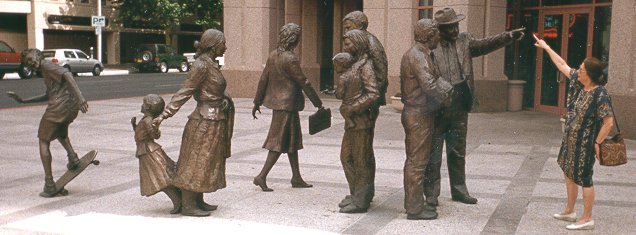A Concern about Reality
Today, we wonder what's real and what's imaginary. The University of Houston's College of Engineering presents this series about the machines that make our civilization run, and the people whose ingenuity created them.
I recently heard Ken Torrance from Cornell University talk about his work on computer graphics. He created simple scenes -- a crib in a room, a jar on a table. He wrote the complicated equations for the reflection and diffusion of light. To illuminate his scenes, he let a computer chew through these terrible equations until it cast light in the same way as a lamp or the sun.
You've seen computer pictures in the movies, but his were much better. Colors reflected just the way they should. They mixed perfectly in the shadows. These pictures had the beauty and accuracy of a Dutch master. When Torrance finished, I didn't know whether I was looking at a picture or the thing itself. These weren't just artists' creations. Torrance had written the rules of nature, and then let the computer obey those rules. In a sense, he'd told the computer how to recreate the actual scenes by obeying the rules of nature.
Of course, it's not easy to parse reality into the language of computers. Yet when we do, the results aren't just stunning, they're disorienting as well. Students of fluid flow struggle to make their computers tell them how fluids move over airfoils, through tubes, past turbine blades. As computers lead us through the tortuous slow-motion swirls of water and air, we sometimes wonder whether we're seeing reality or the imaginings of a lunatic.
The images we create on computers can be more accurate than our imperfect attempts to isolate processes in the laboratory. While the computer's role in our lives expands faster than we know, its users adopt the language of people dealing with real things. They speak of "doing numerical experiments" when they isolate processes on the machine. They're disarmingly casual about separating computer and laboratory data. And the computer takes a larger and larger role as a partner in human "decision-making."
We're no longer sure whether we're looking at a picture created by an artist, a camera, or a computer. The computer can make the sound of a concert grand piano that will fool me. As the computer speaks to our senses as well as to our minds, we start having trouble finding the line between realities of the machine and realities outside it.
I'm John Lienhard, at the University of Houston, where we're interested in the way inventive minds work.
(Theme music)
This episode has been revised and updated as Episode 1518.

(Photo by John Lienhard)